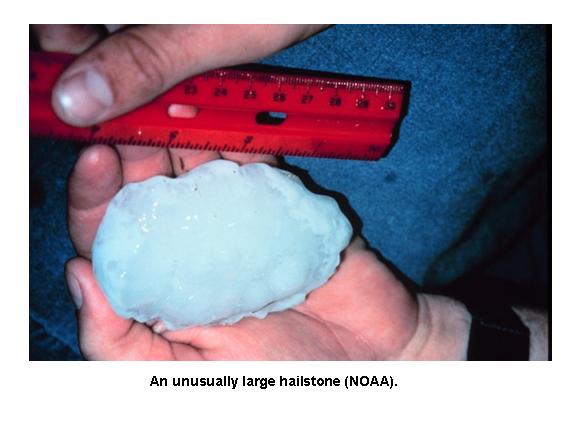Hail is large, layered ice particles, often spherical in shape, which are produced by
thunderstorms having strong, tilted updrafts.
Hailstorms form within a unusually unstable air mass, that is, an
air mass in which the temperature falloff with height is much greater than normal. The unstable air
is necessary to produce large updraft speeds -- fast enough to keep a developing hailstone
from falling to the ground. Some of these updrafts can reach 60 mph or more.
In a hailstorm, small ice particles that form above the freezing level (which occurs in all thunderstorms) collect either rain water
or cloud water on them, forming a water shell that freezes. The tilted updraft and downdraft structure of the
storm is important in order for hailstones to grow because they can be 'recycled' several times,
until they either become too large for the updraft to carry them, or they
get caught in a downdraft, and they finally reach the ground.
|



